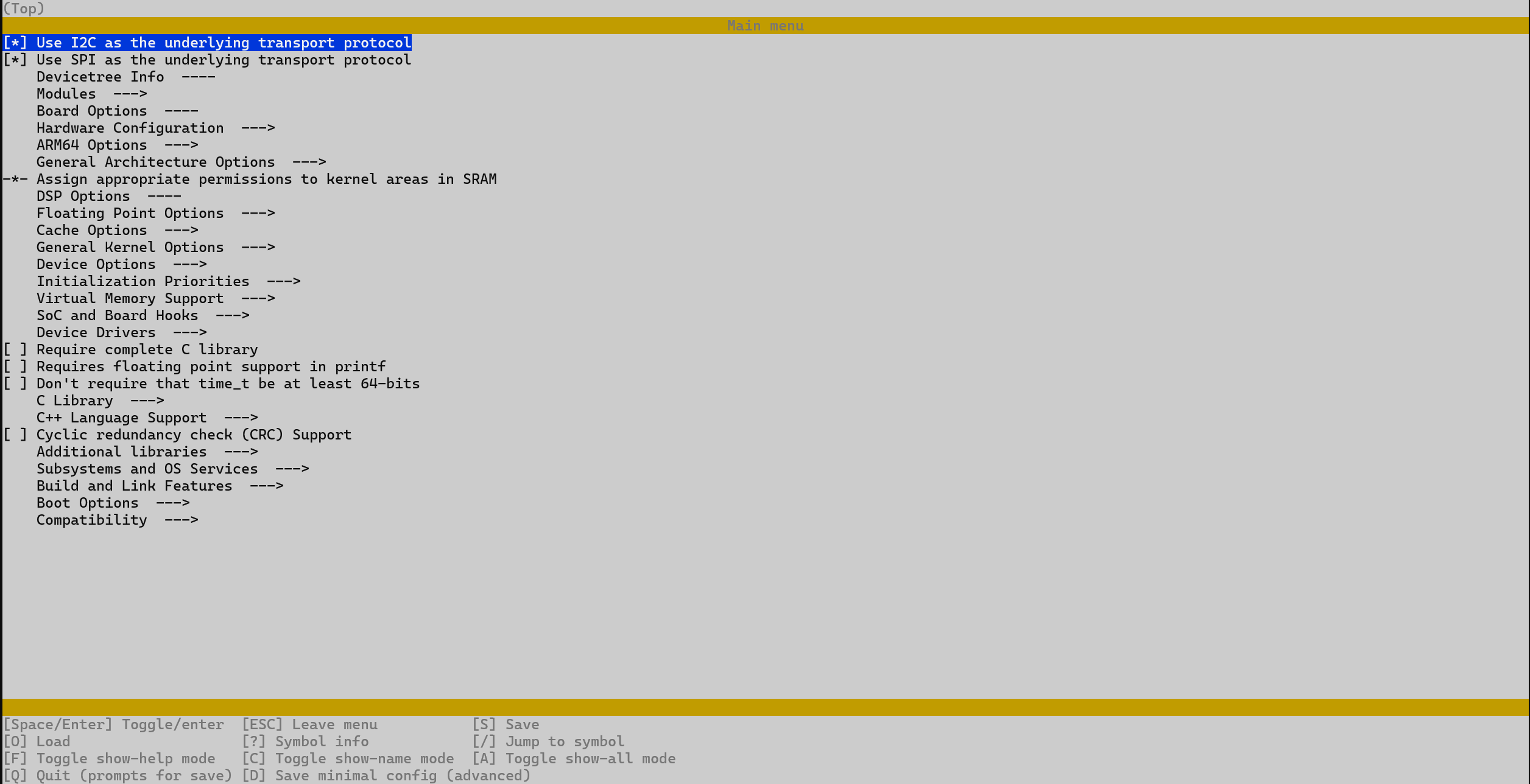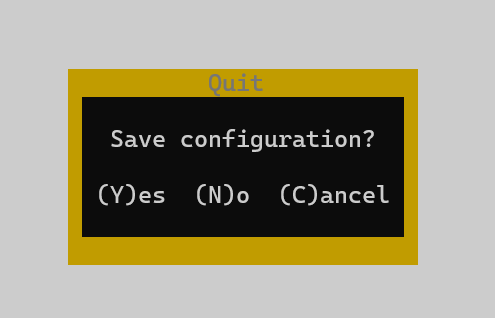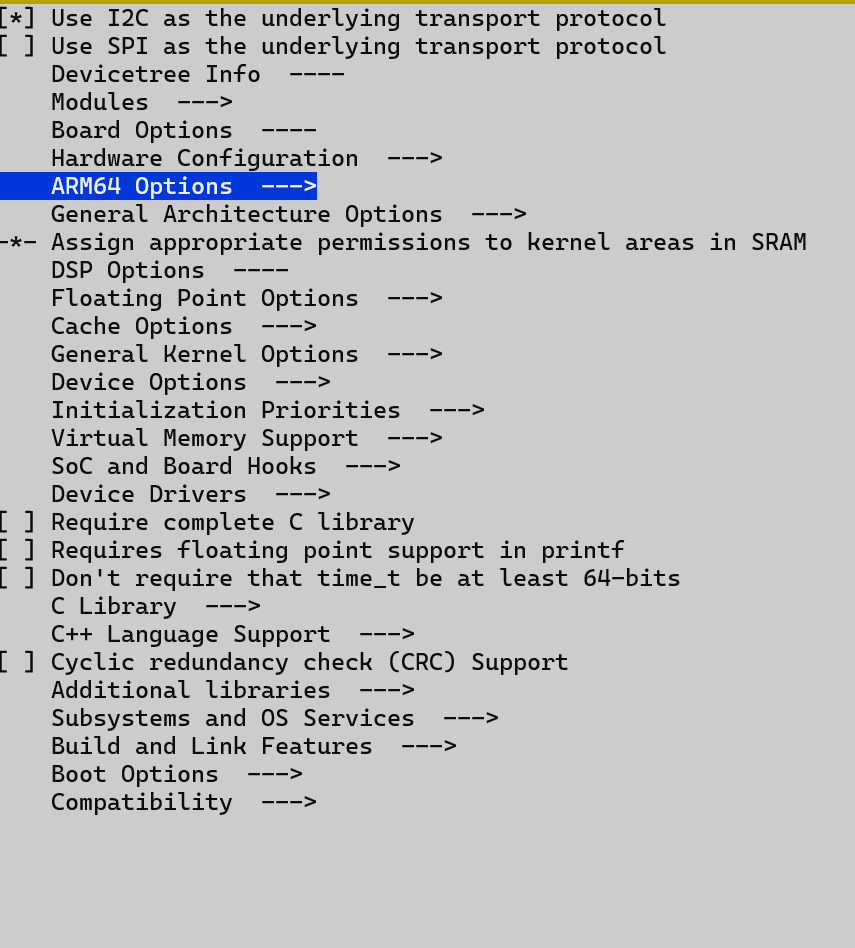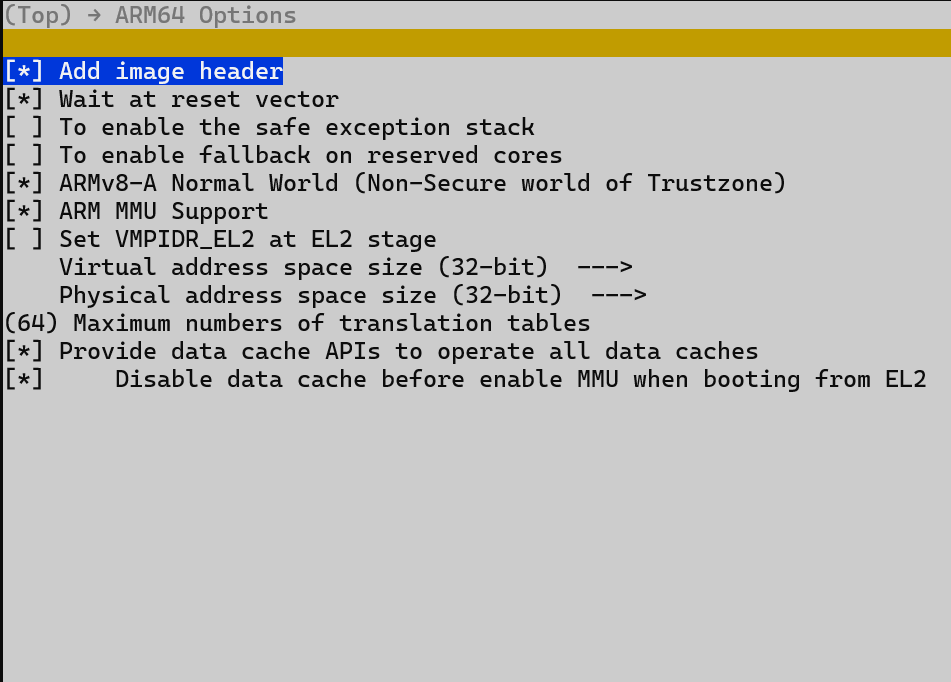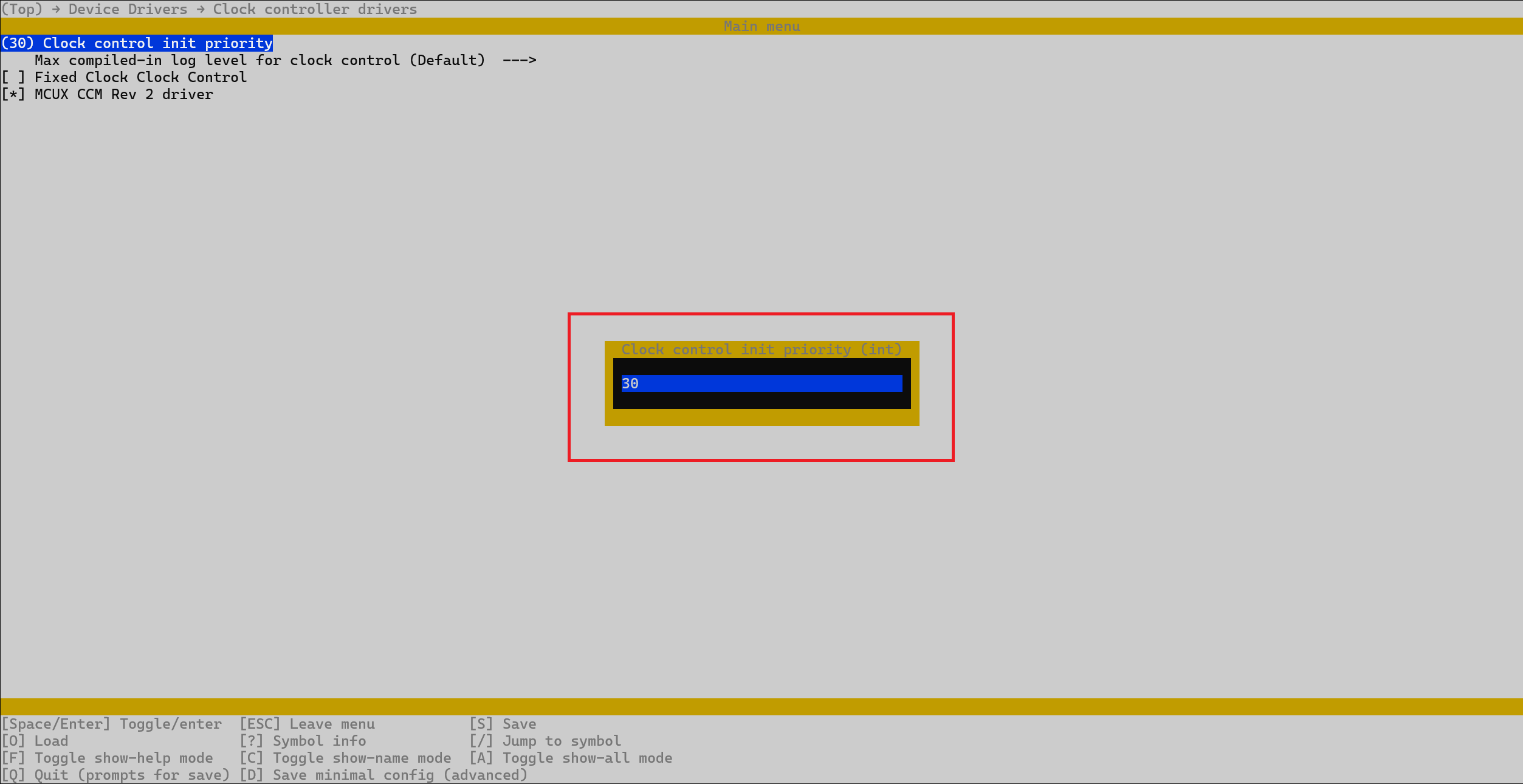Configuring your application
Much like the Linux kernel, Zephyr allows its users to configure the kernel/application at build time through the usage of the Kconfig-based configuration system. This can be used to, for example, enable optional features.
Interactive configuration
Users can choose to configure their application interactively, through the
usage of the menuconfig interface.
Searching for configuration options
If you’re interested in looking for a particular configuration option,
you can use the search interface, which can be accessed by pressing the
/ key. Once open (see Figure 37), you can now type
in the name of your configuration option.
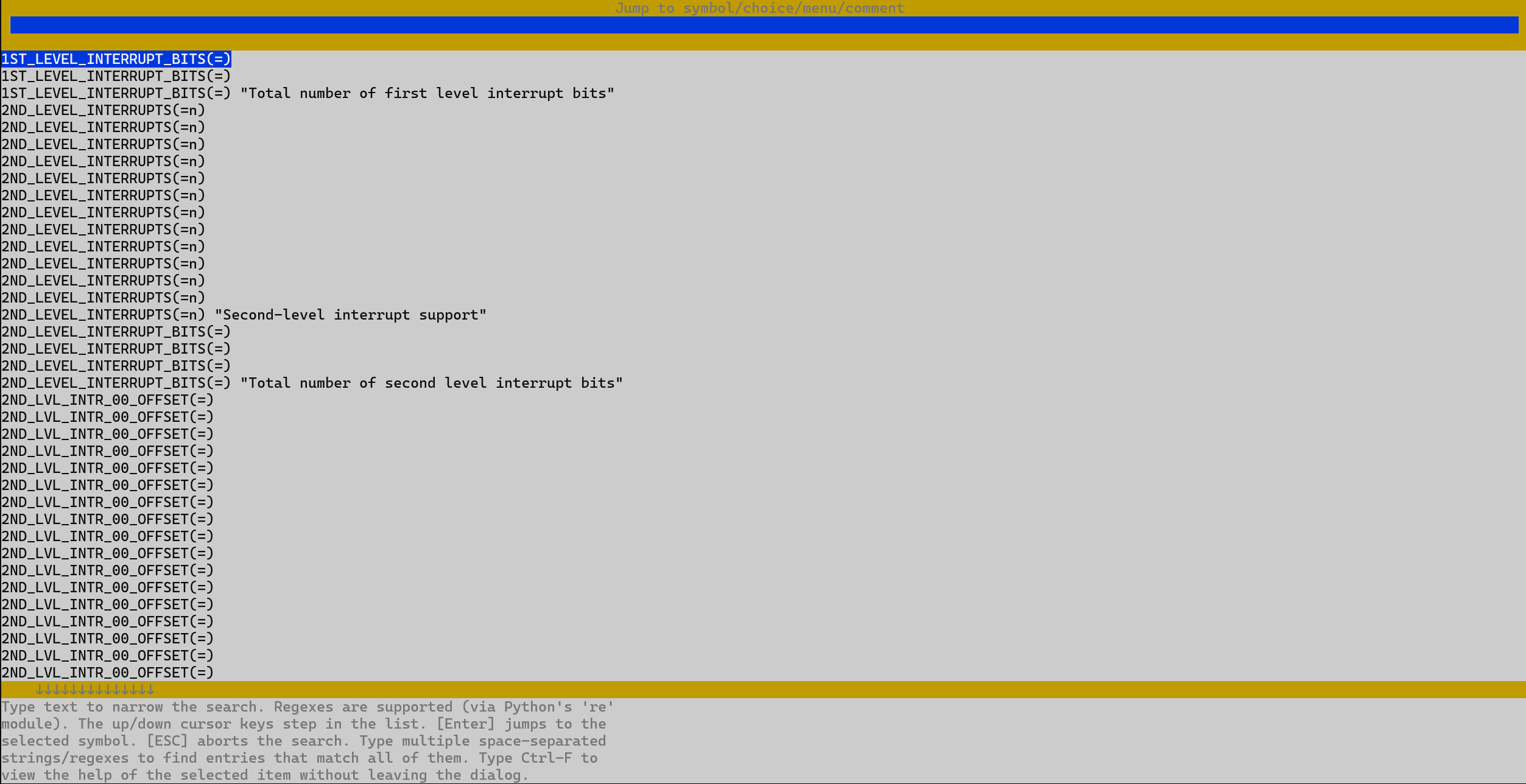
Figure 37 Menuconfig search interface
The name of the configuration option you type in must not contain
the CONFIG_ prefix. For example, assuming we’re interested in
looking for the CONFIG_CLOCK_CONTROL_INIT_PRIORITY option, we’d
simply type in CLOCK_CONTROL_INIT_PRIORITY as shown in
Figure 38.
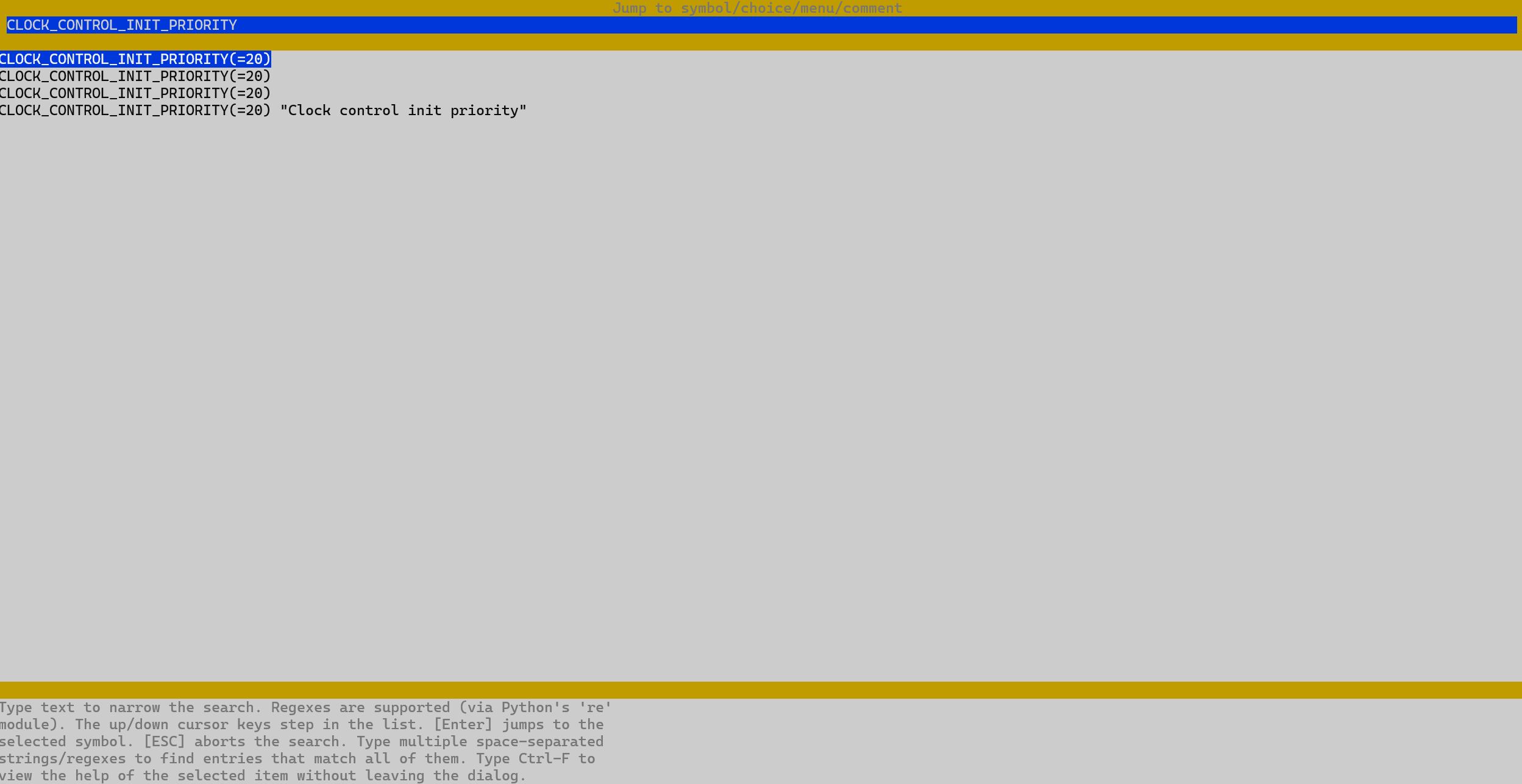
Figure 38 Menuconfig search example
We can then use the up and down arrow keys to navigate through the search results.
Printing help information
Sometimes the menuconfig entries are not descriptive enough and you
might require additional information (such as the name of the associated
configuration option, its type, etc..). In such cases, you can use the
? key to print help information on the currently selected entry
(highlighted in blue as shown in Figure 34). For example,
Figure 39 shows the help infromation printed for the
entry highlighted in Figure 34.
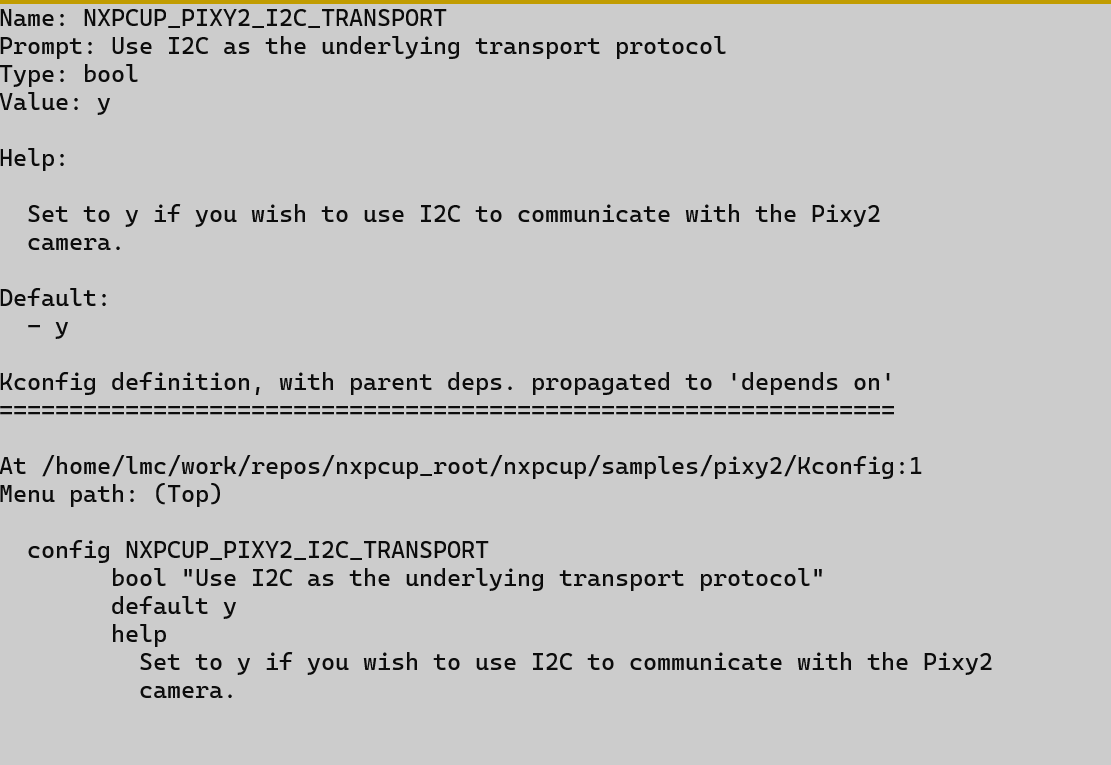
Figure 39 Menuconfig help
If you want to close the help menu, you can just press the ESC key.
Using configuration options in your C code
During the build process, Zephyr will generate an autoconf.h header
file with the definitions of the configuration options and their values.
If you inspect this file (which you should be able to find under
build/zephyr/include/generated/zephyr/autoconf.h), you’ll notice that
each configuration option is defined as a macro. For boolean types, if the
config was assigned the value y, the associated macro will be defined
and will expand to the value 1. For instance:
/* if NXPCUP_PIXY2_I2C_TRANSPORT is set to n, this config will not be defined at all! */
#define CONFIG_NXPCUP_PIXY2_I2C_TRANSPORT 1
On the other hand, if the config is assigned the value n, the associated
macro will not be defined at all. The example below shows you how you can
test if a config was assigned the value y and perform actions based on
that:
int main(void) {
#ifdef CONFIG_NXPCUP_PIXY2_I2C_TRANSPORT
LOG_INF("Hello, world!");
#else
LOG_INF("Goodbye, world!");
#endif /* CONFIG_NXPCUP_PIXY2_I2C_TRANSPORT */
return 0;
}
If CONFIG_NXPCUP_PIXY2_I2C_TRANSPORT is set to y, your application
will print the Hello, world! message. Otherwise, it will print the
Goodbye, world! message.
For integer types, the associated macro should always be defined and will expand to the configured value.
Non-interactive configuration
Note
While you’re still getting used to the development environment, we recommend using this method instead of the interactive configuration as it should be less prone to errors/mistakes.
As discussed in Menuconfig entries, the configuration performed through
menuconfig is not persistent. To overcome this, you can opt for the
non-interactive configuration option, which makes use of the prj.conf file.
Each Zephyr application must have a prj.conf file, even if it’s empty. In
the context of this project, each sample application has the prj.conf file
stored under samples/<sample_name>/prj.conf, while the starting point for
your application has it stored under src/prj.conf.
The prj.conf file is made up of multiple entries, each of which with the
following format:
<config_name>=<value>
where:
config_name: name of the configuration option to modify. The name must contain theCONFIG_prefix. For example:CONFIG_NXPCUP_PIXY2_SPI_TRANSPORT.value: value to assign to the config
Therefore, setting the value of a config option is as simple as adding a new
line to the prj.conf file. For example, assuming we want to set
CONFIG_NXPCUP_PIXY2_SPI_TRANSPORT to y for the pixy2 sample, we’d
have to add the following line to samples/pixy2/prj.conf:
CONFIG_NXPCUP_PIXY2_SPI_TRANSPORT=y
After modifying the prj.conf file, you can re-compile the application as
you normally would (using the -p flag). You also have the option of verifying
if you configuration was saved by opening up menuconfig and looking at
the value that was assigned to your config (needs to be done after the re-compilation).
